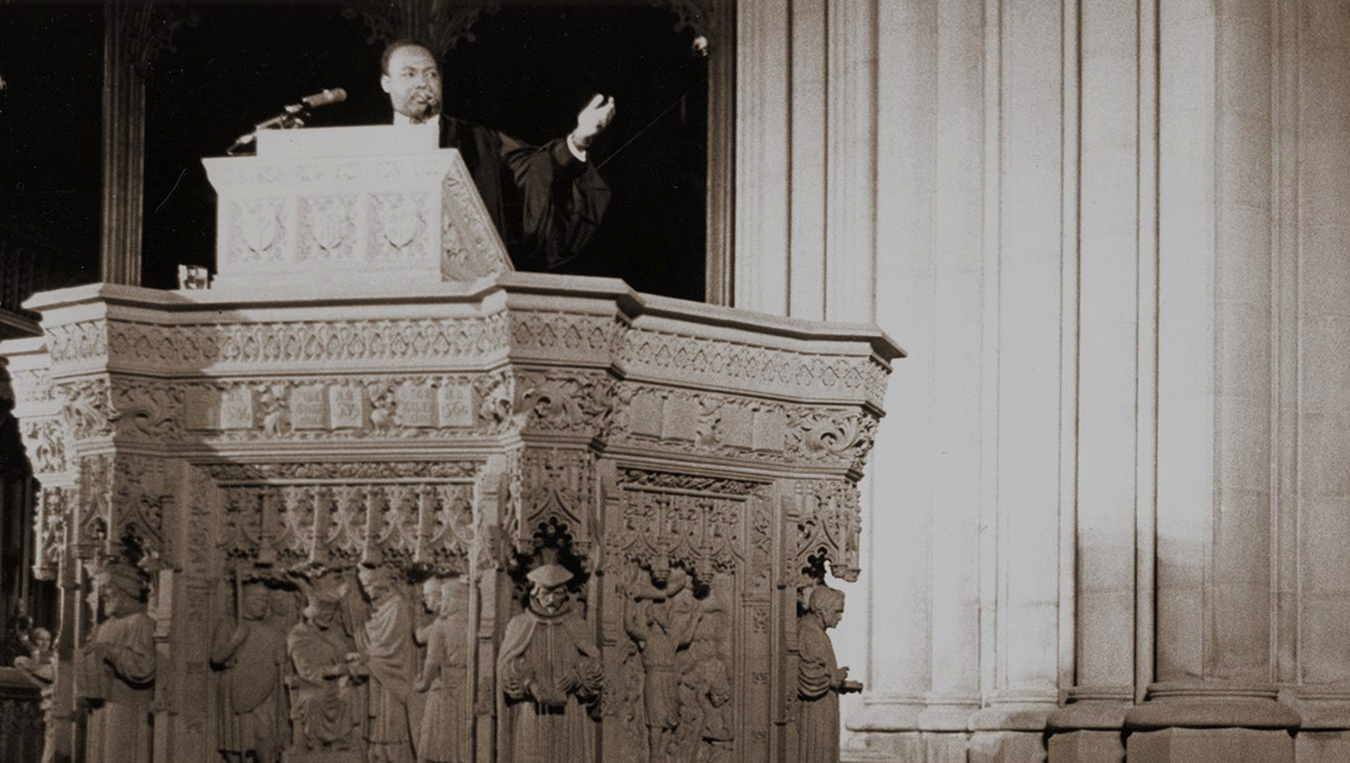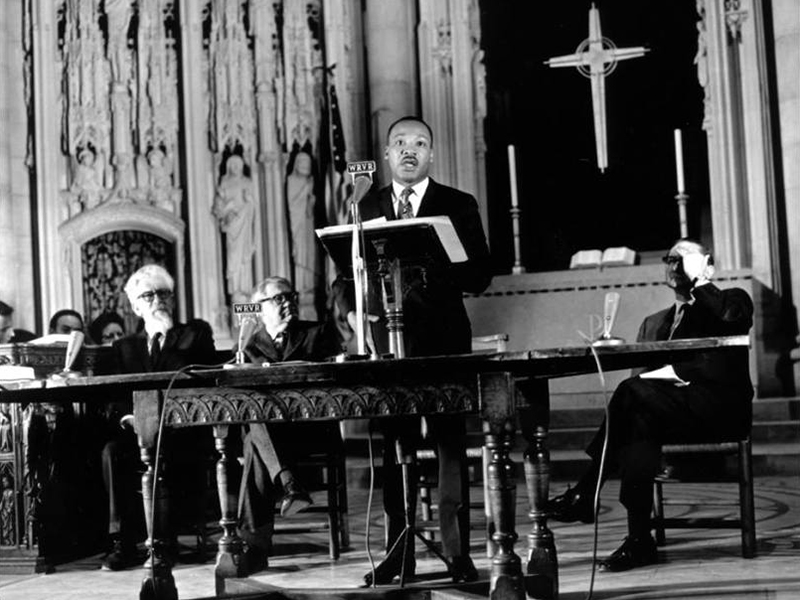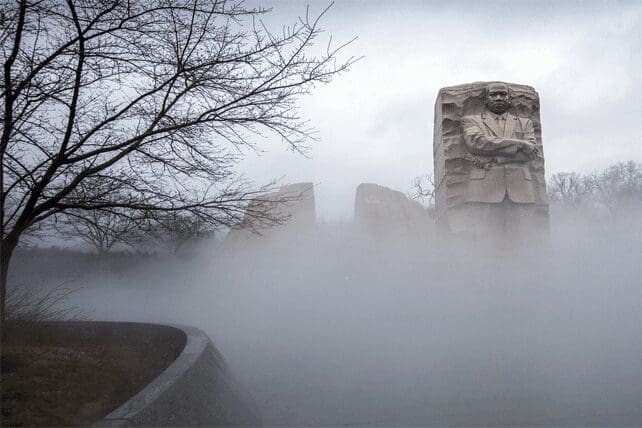(RNS) — While Martin Luther King Jr. Day is mostly commemorated with quotes and clips of King’s 1963 “I Have a Dream” speech and footage of bus boycotts and the 1965 march from Selma to Montgomery, Alabama, some of the most important moments of King’s work came later, as he turned his attention from civil rights to poverty and the Vietnam War.
As he made more appearances in Northern cities to protest segregation and unequal treatment of Black Americans, King’s popularity began to drop. Surveys of the American public as well as statements from some clergy and activists showed the cost of shifting his focus away from the South and Jim Crow after the passage of the Civil Rights Act.
In 1967 — the last full year of his life before he was killed in Memphis, Tennessee — Religion News Service (then known as Religious News Service) published dozens of stories about King, chronicling how his growing outspokenness against the Vietnam War and his advocacy for the poor, while it garnered support from celebrities such as Dr. Benjamin Spock, drew criticism from evangelist Billy Graham and others.

The Rev. Martin Luther King Jr. discusses his planned poor people’s demonstration from the pulpit of the Washington National Cathedral in Washington, D.C., on March 31, 1968. (AP Photo)
Here’s a sampling:
January 1967
When Gallup Poll’s 1967 list of “most admired” men was announced early in the year, King had dropped out of the top 10.
At the top of the list were President Lyndon Johnson, Gen. Dwight Eisenhower and Robert Kennedy. They were followed by the only two religious leaders cited that year: Graham, cited fourth, and Pope Paul VI, who was fifth.
King had been listed sixth in 1965 and fourth in 1964.
(By 1999, Gallup cited King second on a list of the most admired people of the 20th century, after Mother Teresa and ahead of John F. Kennedy, Albert Einstein and Helen Keller.)
April 1967
In the same month that King gave his controversial “Beyond Vietnam” speech at New York’s Riverside Church, he co-led a march for peace from Central Park to the United Nations Plaza. He marched with Spock, the renowned pediatrician and pacifist, and spoke at a rally along with Stokely Carmichael, leader of the Student Nonviolent Coordinating Committee.

The Rev. Martin Luther King Jr. speaks about his opposition to the war in Vietnam at Riverside Church on April 4, 1967, in New York. RNS file photo by John C. Goodwin
Police estimated the five-hour event drew a crowd of about 125,000, reads an RNS story headlined “CLERGY JOIN GREAT CROWD IN NEW YORK PEACE RALLY.”
But RNS also reported that King said the crowd was closer to 250,000 or 300,000, calling it the “largest peace demonstration ever held in the U.S.”

